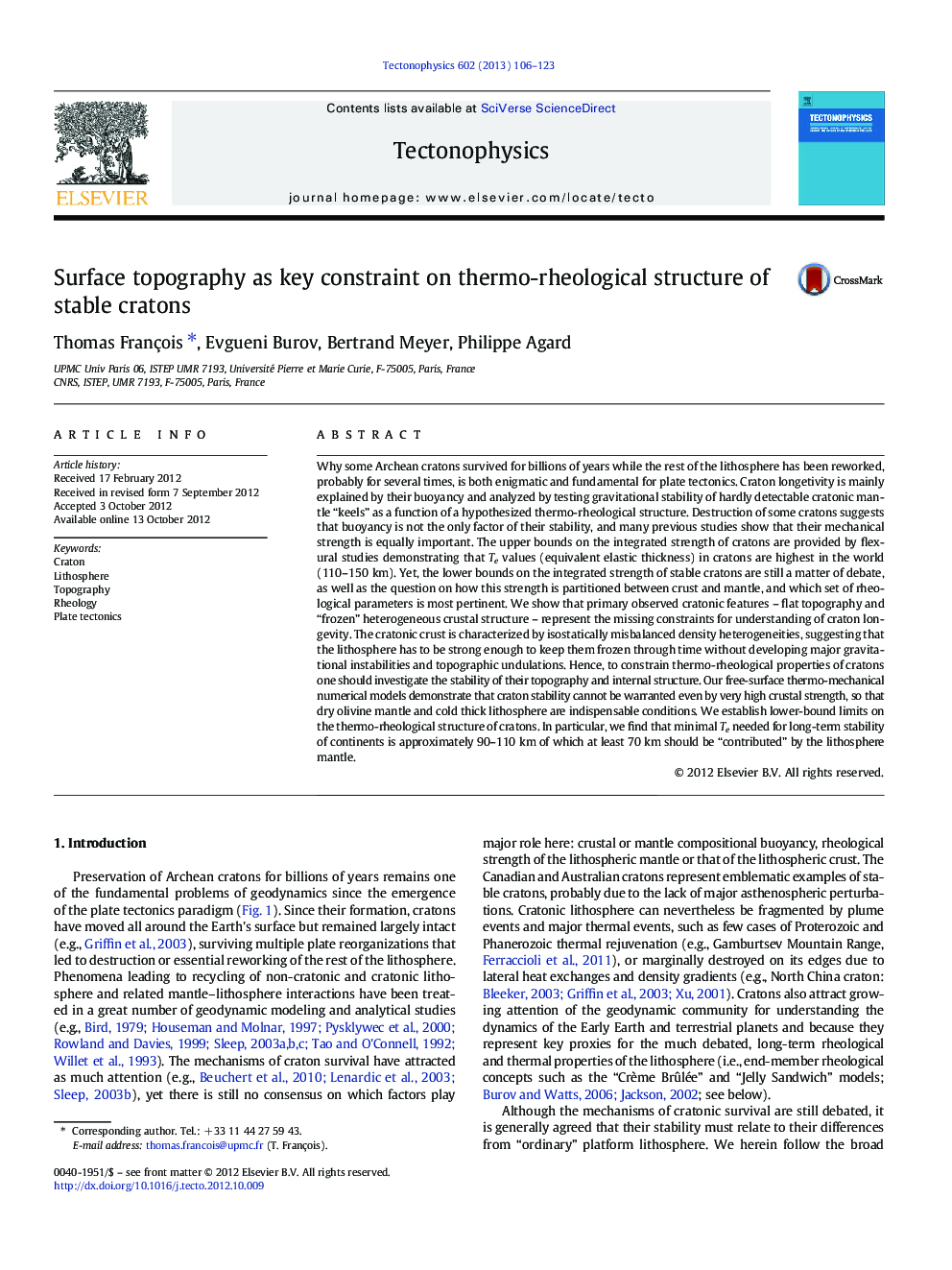| کد مقاله | کد نشریه | سال انتشار | مقاله انگلیسی | نسخه تمام متن |
|---|---|---|---|---|
| 4692247 | 1636785 | 2013 | 18 صفحه PDF | دانلود رایگان |

Why some Archean cratons survived for billions of years while the rest of the lithosphere has been reworked, probably for several times, is both enigmatic and fundamental for plate tectonics. Craton longetivity is mainly explained by their buoyancy and analyzed by testing gravitational stability of hardly detectable cratonic mantle “keels” as a function of a hypothesized thermo-rheological structure. Destruction of some cratons suggests that buoyancy is not the only factor of their stability, and many previous studies show that their mechanical strength is equally important. The upper bounds on the integrated strength of cratons are provided by flexural studies demonstrating that Te values (equivalent elastic thickness) in cratons are highest in the world (110–150 km). Yet, the lower bounds on the integrated strength of stable cratons are still a matter of debate, as well as the question on how this strength is partitioned between crust and mantle, and which set of rheological parameters is most pertinent. We show that primary observed cratonic features – flat topography and “frozen” heterogeneous crustal structure – represent the missing constraints for understanding of craton longevity. The cratonic crust is characterized by isostatically misbalanced density heterogeneities, suggesting that the lithosphere has to be strong enough to keep them frozen through time without developing major gravitational instabilities and topographic undulations. Hence, to constrain thermo-rheological properties of cratons one should investigate the stability of their topography and internal structure. Our free-surface thermo-mechanical numerical models demonstrate that craton stability cannot be warranted even by very high crustal strength, so that dry olivine mantle and cold thick lithosphere are indispensable conditions. We establish lower-bound limits on the thermo-rheological structure of cratons. In particular, we find that minimal Te needed for long-term stability of continents is approximately 90–110 km of which at least 70 km should be “contributed” by the lithosphere mantle.
► Thermo-mechanical numerical modeling of the craton stability
► Relations between surface topography and structure of the lithosphere
► Strong dry olivine mantle rheology and cold thick lithosphere are needed for craton survival.
Journal: Tectonophysics - Volume 602, 16 August 2013, Pages 106–123